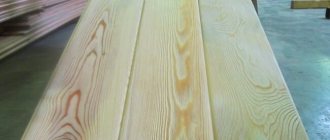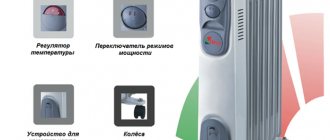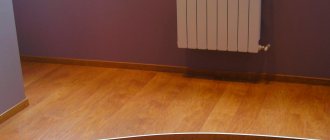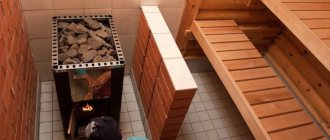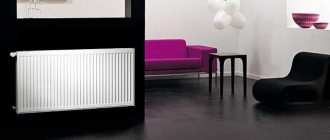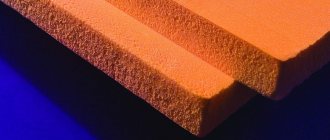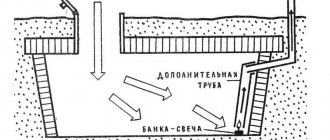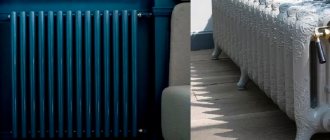Winter is just around the corner. In some regions of the country the air temperature has already reached zero. The cold will come very soon, and with it the heating season. However, warm radiators do not guarantee a comfortable room temperature. Often precious heat goes outside. There may be several reasons for this problem. And it’s better to determine them before the start of the heating season, because it’s not for nothing that folk wisdom says, “Prepare a sleigh in the summer, and a cart in the winter.”
The houses we live in are often insufficiently energy efficient. This applies to modern apartment buildings, Soviet buildings and individual housing construction. Energy for heating a home is required several times more than in EU countries. As a rule, frozen households see salvation in installing additional heaters, most often electric. But such a decision only leads to increased utility bills. It turns out that the consumer buys more heat than he ultimately gets. It's unpleasant, isn't it?
Causes of heat loss in the house
Before moving on to active measures to insulate your home, you should understand the possible causes of heat loss.
- Leaks in wall panel joints.
- Leaks in door and window units.
- Poor quality finishing of external walls.
- The integrity of the roof is compromised (including the junction of the roof with the protruding elements of the building).
- Poor quality drainage system from the roof and blind area.
- Faulty supply and exhaust ventilation system.
- Faulty thermal insulation of communications.
- Poor performance of the heating system - low-power heating boiler, old radiators.
These are the most common problems that home and apartment owners encounter. If at least one of the problems is detected, it should be eliminated immediately.
How to keep your apartment warm
According to current standards, the temperature in the living room must be at least 18°C. Many will agree that this is not enough for a comfortable stay in the room. To ensure warmth and comfort in your nest, you will have to make some efforts. So, what to insulate and with what?
Walls
Traditional building materials, such as brick, concrete, reinforced concrete, can reliably protect housing from heat loss. But only with very large wall thicknesses. The cost of production, delivery and use of building materials is very high; the construction of thick walls is not economically feasible. Therefore, to reduce heat loss we have to look for other methods.
To prevent the wall from taking heat from the radiator, you need to install a protective screen made of ordinary foil between them. Due to this, the heat will be reflected and remain inside the apartment. The size of the shielding foil should be slightly larger than the dimensions of the battery. Heat loss when installing a protective screen will be reduced by 3%.
There is a more radical method of reducing heat loss through walls - thermal insulation. Experts say: insulating the external walls of an apartment will be much more effective. In addition, this allows you to carry out any finishing work, while living conditions and the area of the interior premises will remain unchanged. Insulating a wall in an apartment from the inside is also possible, but such work is accompanied by many inconveniences.
Entrance door
A lot of heat also escapes through the entrance group. A massive door is the key to a warm apartment. It is not necessary to make new purchases. To avoid big expenses, you can insulate the old door, for example, upholstering it with leatherette with a foam rubber gasket. If there are gaps between the wall and the door, they need to be sealed with polyurethane foam and plastered.
If you plan to buy a new door, then it is better to leave the old one too. This way you get two doors with a heat-insulating air layer between them. Measures to insulate and replace the door will reduce heat loss by 1.5%.
Window
Insulating windows is a long-standing tradition for residents of our latitudes. An increase in temperature of 1-2 degrees is possible! All joints between frames and sashes are sealed with cotton wool, foam rubber or tow and sealed with masking tape or, in the old fashioned way, with paper. You can also use foam rubber with adhesive tape or rubber sealing. These materials are perfect for eliminating loose closing of frames and sashes.
A successful solution to reduce heat loss is to install heat-shrinkable energy-saving film on the frame, parallel to the glass or double-glazed window. Thermal film is installed from the inside. It creates an additional heat-insulating layer and prevents heat loss.
Sometimes even replacing old wooden windows with plastic ones does not solve the problem of heat loss. There can be many reasons. The most common of them are: incorrect adjustment, poor-quality seal, leaky fit of the window sill and slopes. You can fix the problem yourself or call a specialist.
Insulating windows will reduce heat loss by 3-5%.
Furniture
Proper placement of furniture is also important in terms of heat conservation. You can protect yourself from an unheated wall using an ordinary cabinet, simply by isolating it from the source of cold. But it is not recommended to place any furniture near the radiator, as this prevents the spread of warm air throughout the room. The same applies to heavy thick curtains on the windows. They simply do not let heat into the room.
Perhaps, in order to enjoy the warmth, it is enough to reconsider the interior.
LiveInternetLiveInternet
Quote from belorys_kh
Read in full To your quotation book or community! Winter cold, how to insulate the front door In order to keep your house or apartment warm in winter, you need not only an effective heating system, but also proper insulation of doors and windows. As with windows, experts estimate that up to 20% of heat can be lost through the front door.
In our article we will tell you how to insulate iron and wooden entrance doors, thereby increasing the thermal efficiency of your home.
Insulating wooden or metal doors around the perimeter of the frame is a simple task that anyone can do. To do this, you will need a self-adhesive or mortise seal, which can be purchased at most construction supermarkets.
When using a self-adhesive seal, it is necessary to degrease the surface of the door frame with alcohol or acetone, and then stick the seal around the perimeter. The mortise seal is simply “pressed” into a special groove cut into the door frame.
Advice
To determine what thickness of sealant to buy, use plasticine wrapped in cellophane. Place it between the door and frame and press down. The thickness of the resulting roller will be the required thickness of the seal. If the seal is not selected accurately, then heat will escape through the remaining cracks or (if the thickness is too large) the excess load on the lock will shorten its service life or prevent the door from closing at all.
When talking about insulating a metal door, it is important to understand that we are talking about a standard, non-insulated door consisting of a metal profile with a sheet of metal welded to it. Such a door may provide protection against burglary, but it certainly will not protect against the penetration of cold and extraneous noise.
In fact, most metal doors are designed this way, because externally it is almost impossible to distinguish a door filled with insulation from a “dummy” door.
To insulate the door you will need:
- foam plastic or polystyrene foam panels corresponding to the size of the door (according to the thickness and area of the metal frame)
- fiberboard sheet
- sealant or liquid nails, screws
- tools: drill, tape measure, jigsaw, screwdriver, marking pencil
1. Take measurements of the door leaf, including the profile, and transfer the resulting dimensions to a sheet of fiberboard. Cut out the lined template, not forgetting to make holes for the peephole and door lock.
2. Fill the inside of the door with foam plastic, securing it with sealant or liquid nails
It is important that when filling the door with polystyrene foam there are no voids left anywhere; if there are any, they must be filled with polyurethane foam. Don’t forget that you also need to make a hole in the foam for the door peephole.
3. After the foam plastic is fixed and all the voids are blown out, a pre-cut fiberboard sheet is screwed in using screws evenly distributed around the perimeter of the sheet. When the insulation work is completed, the door is covered with paneling.
It should be said that the design of the doors may vary slightly, and this determines what materials you will need. If the canvas has a prefabricated structure (consists of two sheets of metal, one of which is removable), you will not need a sheet of fiberboard.
Insulating a wooden door is not much different from insulating a metal door, since the door designs are in most cases the same.
If the wooden door is empty inside, then the insulation is laid inside. On an all-wood door, you can attach a wooden frame with self-tapping screws, into which the insulation will be placed.
But most often, solid wood doors are insulated with upholstery. To upholster the door you will need batting or any other soft insulation, nails with wide heads and leatherette.
Advice
The size of the leatherette is calculated by the formula - the area of the fabric + 5 centimeters on each side for the hem. The door must be removed from its hinges, freed from fittings and laid on a flat surface. Then the insulation is laid out on the canvas and secured using a furniture stapler. After this, leatherette is fixed to the door - starting from the upper corners, maintaining the tension of the material and avoiding distortions.
Useful tips
- Open the curtains and let the sun into your apartment! During daylight hours in clear weather, this will help raise the temperature by a couple of degrees.
- Lay a carpet on the floor - this is an excellent barrier to cold air and an additional layer of insulation.
- Leave the door to the bathroom open after water procedures - warm air will fill the neighboring rooms and make them a little warmer.
- Use a fan - direct the air flow towards the radiator, this will help the heat spread throughout the room faster.
- Don't rush to close the oven after cooking dinner - use warm air to heat the kitchen.
- Close interior doors - do not allow heat to escape into a room where no one is present.
Winter is just around the corner. Preparing your home for severe frosts will help you comfortably survive this period without additional unwanted expenses. How do you prepare for winter?
Close the curtains at night
During the day, windows repel more radiant energy than they allow through. Only sunlight penetrates freely through the glass. For infrared rays, this material becomes an obstacle. At night, thin single-pane glass units can cause extreme cold. Even if you try to maintain the air temperature in your apartment at about 20 °C every day, with the arrival of darkness and a sharp drop in temperature outside, this value can drop to 7 °C.
Like Kristina or Varum: fans are wondering who Pugacheva looks like in the new photo
Oreo cookies and cream cheese: making red velvet cheesecake
Test your school knowledge: only a genius can answer 9/9 (test)
Double glazed windows are also not always able to keep the heat in the house. Even a small drop in temperature, up to 14 ° C, will lead to energy losses of approximately 50-100 W per square meter.
The best way to prevent such a sudden loss of stored heat is to close the curtains immediately after sunset. This will provide an additional barrier to radiant energy in the room. In addition, curtains will protect against drafts and partially isolate the room.
